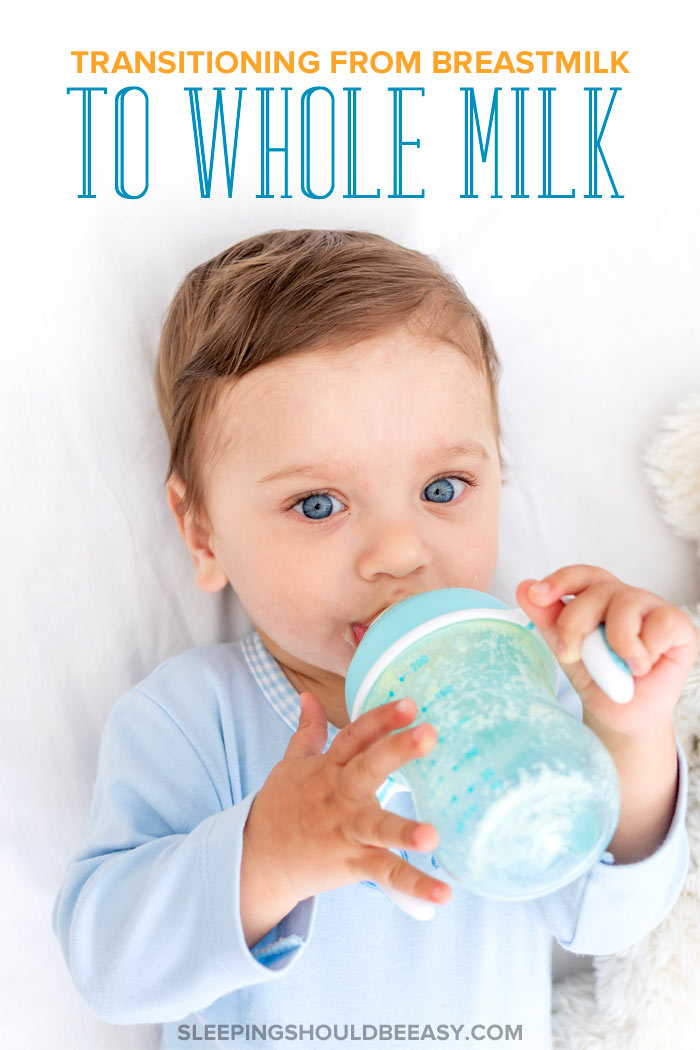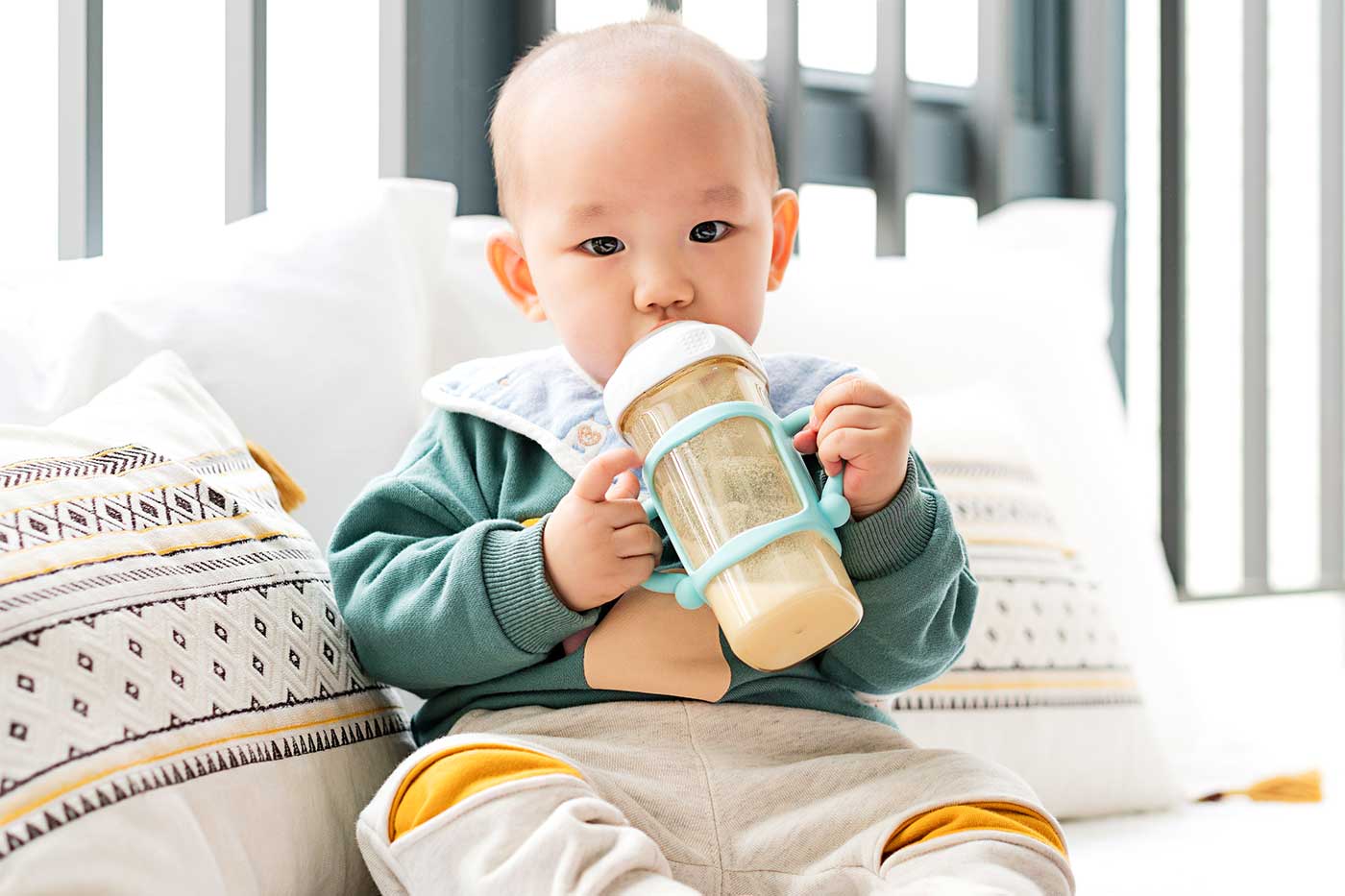FAQs About Transitioning from Breastmilk to Whole Milk
Ready to start transitioning from breastmilk to whole milk? Learn how to make the switch when your baby turns a year old.
 The first-year mark couldn’t come fast enough. Yes, I was celebrating my baby’s leap into toddlerhood, but I had my own milestone as well: I would no longer pump or breastfeed.
The first-year mark couldn’t come fast enough. Yes, I was celebrating my baby’s leap into toddlerhood, but I had my own milestone as well: I would no longer pump or breastfeed.
While my breastfeeding journey didn’t exactly start off easily, I actually enjoyed nursing my baby. In fact, weaning became a bittersweet close to that stage in his life.
But of course, I had questions.
Like everything else related to raising kids, I wondered if there was a “right way” to handle the transition from breastmilk to whole milk. After all, the American Academy of Pediatrics (AAP) warns not to give whole milk before then.
Turns out, transitioning isn’t a one-size-fits-all solution. The questions I had—and the ones you’re also likely wondering—aren’t so black and white.
Still, that doesn’t mean we can’t find a few answers to guide our decisions. To hear what other parents have done to make the transition smoother. So, take a look at these top questions and hopefully, you can find the answers you’re looking for:
Table of Contents
1. “When do you start switching to whole milk?”
We’ve all heard not to offer whole milk until our babies turn a year old. But if one were to gradually introduce whole milk, does that mean we start introducing it earlier than the one-year mark? Or do we wait until their first birthday to gradually offer it?
While some parents—with their pediatrician’s approval—introduce small amounts of whole milk before the one-year mark, others—including myself—wait until after the child turns one to do so.
As eager as you may be to switch sooner than later, his digestive system may not be able to take whole milk as well as breastmilk.
When you do, start by introducing whole milk in little ways at first. For instance, offer it in oatmeal for breakfast or a smoothie at snack time. Give him an ounce a day and work your way up. You can also offer other dairy products earlier, like yogurt and cheeses.
Look out for possible reactions (from a rash to diarrhea), at which point, you should talk to your pediatrician about milk alternatives.
Free printables: Out of ideas on what to do with your little one at this age? Grab your printable calendar of fun and simple play activities below—at no cost to you! Check them off as you go along, or use the blank template to add your own ideas. You’ll also get my newsletters, which parents say they LOVE:
“Thanks a lot for this, I really appreciate it. Sometimes I find myself struggling to come up with activities for my son unless I sit down and write them down. Though usually, I don’t have that kind of time. Sometimes I find myself falling short of trying to play with him or finding activities that he would like to do. This helps a lot. Thanks again!” -Huda D.
2. “Should I give whole milk in a bottle or sippy cup?”
Another often-asked question is how to offer whole milk: in a bottle or a sippy cup?
By far, most parents offer whole milk in a sippy cup, most likely in an attempt to finally do away with those bottles completely. Plus, we’ve all heard that extended bottle use can affect their teeth as well as their inability to part with this comfort item.
One way to make this transition smoother is to introduce the sippy cup much earlier, before you switch to whole milk. For instance, offer water or the occasional juice in a sippy cup. If you supplement with formula, try offering it in a cup instead of a bottle.
That way, when it’s time to transition to whole milk, your child is already familiar with how it works.
All that said, it’s also not uncommon for parents to stick to bottles for a while. Many use bottles as they gradually add more and more whole milk before doing away with them completely. And others rely on bottles because their kids simply refuse to use the sippy cup.
Still, if you want to avoid bottles once and for all, have him adjust to a sippy cup rather than prolonging the inevitable.
Get tips on how to introduce the sippy cup.

3. “At what temperature should the whole milk be?”
Wondering if you still need to warm whole milk the way you may have done for breastmilk? Once again, the temperature of whole milk has more to do with your own preference than any rule you need to follow.
But let’s talk about a few reasons to either warm the milk or serve it cold. Personally, I didn’t warm the milk—I’d pour a little bit into the breastmilk.
That way, once it was time to offer a full serving of only whole milk, my child had already been introduced to the cold temperature. I didn’t want to create a habit of needing his milk warmed—I wanted him to be able to drink it cold like I did.
However, if your child has, say, always had his bottles warmed, then it might make sense to do the same with whole milk. This is especially true if you plan to introduce it cold turkey instead of gradually.
But give cold whole milk a try—that’s one less task to do each time he drinks it.
4. “Should I gradually mix breastmilk, or go cold turkey?”
I prefer to mix breastmilk and whole milk an ounce at a time, starting with any feedings that your child already receives a bottle for.
For instance, I started adding whole milk to the sippy cups my child drank when he was away from me during work. I added one ounce to one sippy cup on Day One. On Day Two, I added two ounces to the same feeding sessions, until eventually he was drinking a full sippy cup of whole milk.
By gradually adding whole milk, you can watch out for any reactions or digestive issues your child might have. You’re also able to introduce it to her taste buds, tying it with a familiar comfort food.
5. “Is it okay to mix breastmilk and whole milk and store it in the fridge, or do I need to mix it right before feeding?”
When my child was transitioning from breastmilk to whole milk, I mixed both milks and stored the sippy cups in the fridge. This was especially true for the feedings he’d get while I was at work. I didn’t want to trouble his caregiver with measuring and mixing and preferred to do it myself.
That said, store both breastmilk and whole milk in the fridge before mixing it, so that both are at the same temperature. For instance, store expressed breastmilk in the fridge after you come home. Then the following morning, prepare the mixed sippy cups using both of the cold milks.
6. “Should I offer whole milk separately as a meal, like nursing, or as an accompanying drink with meals?”
Now that your child is drinking whole milk, do you continue serving it as a separate meal, or when she eats her meals?
Keep your same schedule and offer whole milk the same as when you offered breastmilk. In other words, keep it separate from when he eats solids and meals.
I offered whole milk after my kids woke up from naps, which was a convenient way of also decreasing their milk intake as they got older and took fewer naps. For instance, I’d offer a sippy cup of milk after they woke up in the morning and after naps, then one last cup before bed.
Offering it separately also makes it less likely for your child to expect milk with each meal, something he likely won’t do as he grows up.
7. “How much whole milk should my child get every day?”
Even though your child is drinking whole milk, it’s not the same as the breastmilk he was drinking up to this point. While breastmilk offers a complete package of necessary nutrition, whole milk is supplemental. Yes, it’s a fantastic source of the fat he needs to grow, but by no means is it complete.
That’s why it’s important to watch how many ounces he typically drinks a day. At 12 months old, the AAP recommends no more than 16-24 ounces of whole milk a day. Once he gets closer to two years old, that number goes down to no more than 16 ounces a day.
As always, ask your pediatrician how many ounces she recommends for your child. Each person is unique, but in most cases, no more than 24 ounces is the rule of thumb.
And some babies don’t take to whole milk right at the one-year mark, especially if they were born early. Talk to your pediatrician about alternatives to whole milk, and make sure he stays hydrated in other ways.
Conclusion
Transitioning from breastmilk to whole milk is often a welcomed milestone for many parents, though it does come with its own questions.
You wonder when it’s okay to transition, or whether to offer milk in a sippy cup or bottle. Perhaps you don’t know what temperature the milk should be, and if you should offer it with meals or separately.
You may have asked if mixing the milks is the way to go, and if so, when you should mix and prepare them. And finally, you’re not the only one who’s asked exactly how much whole milk is okay to offer.
Now you can make transitioning from breastmilk to whole milk a smooth process for you and your child. If anything, you can finally celebrate putting that pump and all its parts and bottles to rest.
Get more tips:
- How to Introduce Milk to a 1 Year Old
- Why Your Toddler Is Going Through the 1 Year Old Sleep Regression
- 15 Samples of a 1 Year Old Eating Schedule
- Need a Toddler Schedule? 15 Examples That Can Make Life Easier
Don’t forget: Join my newsletter and grab your calendar of fun and simple play activities below—at no cost to you:

